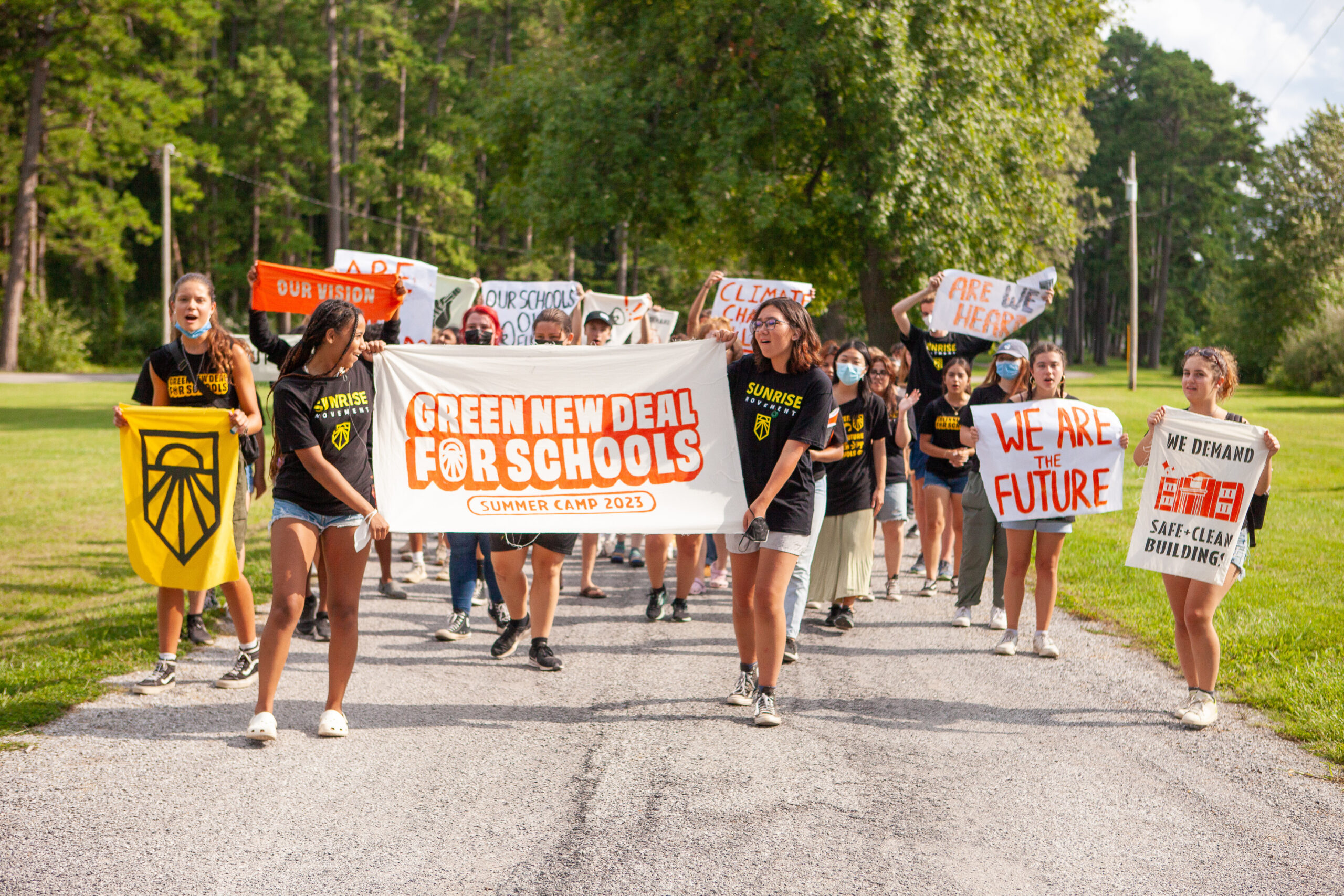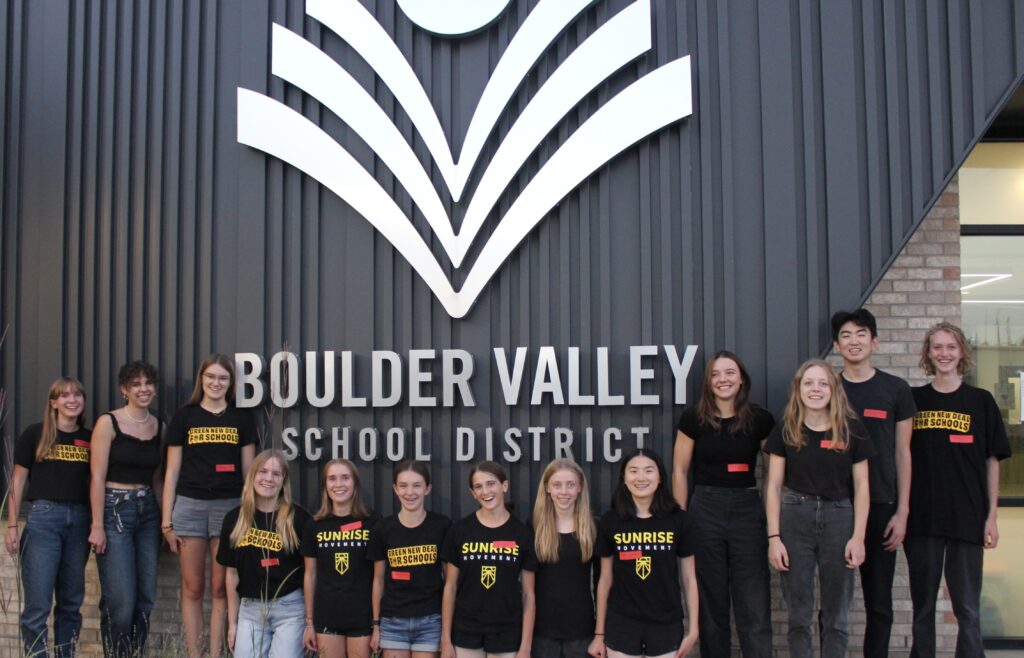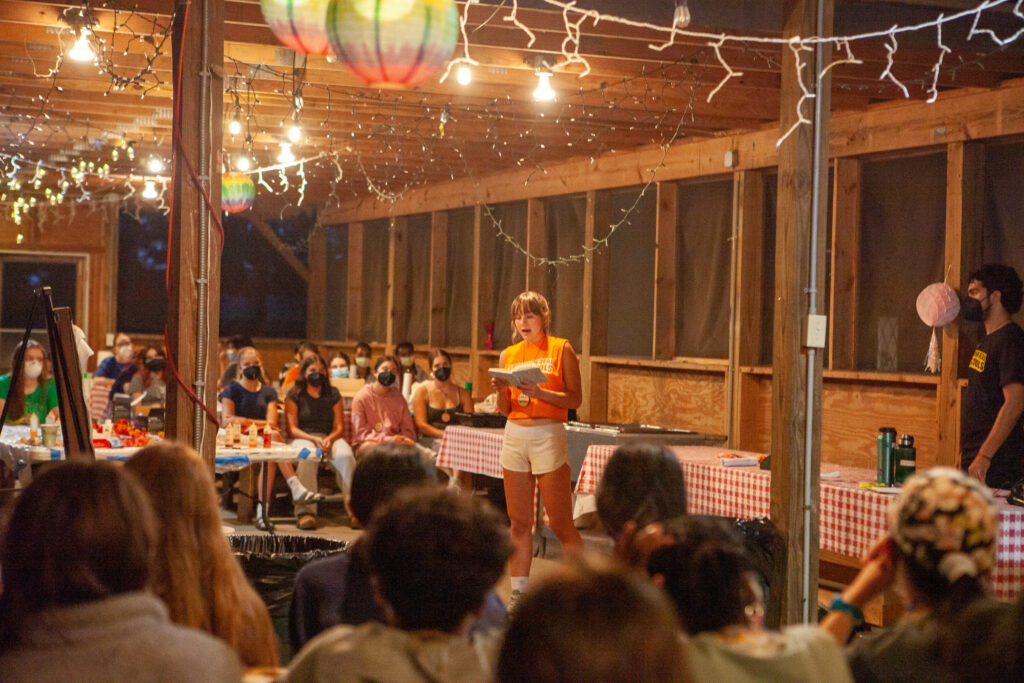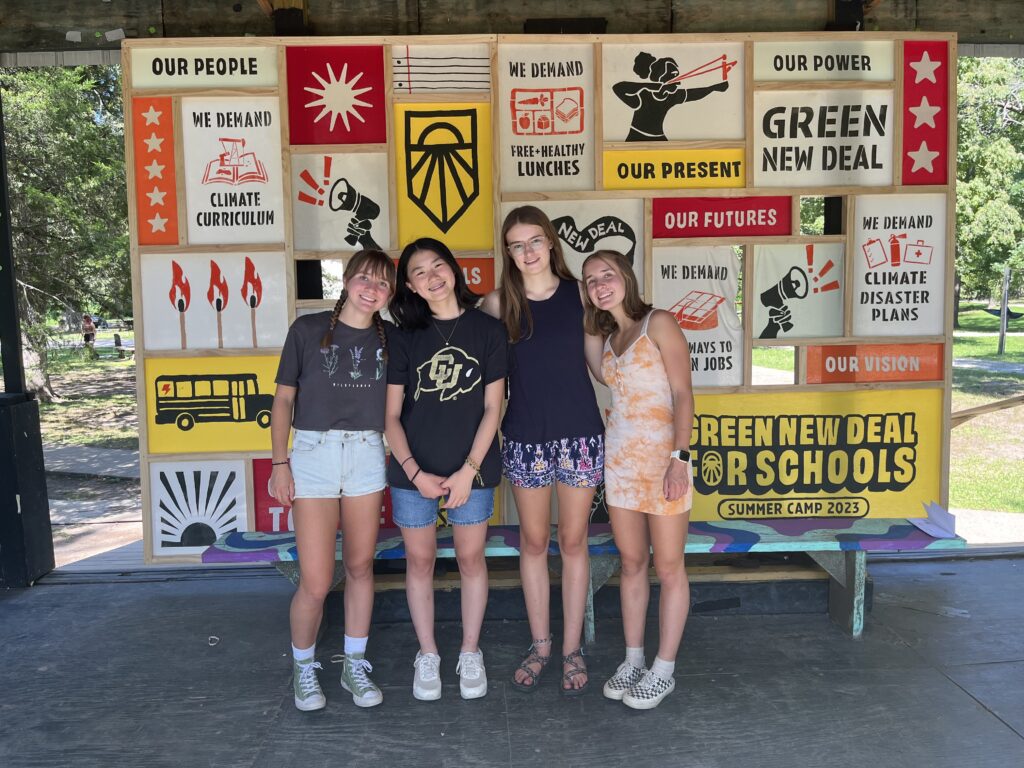
Emma Weber isn’t waiting anymore for adults to save the planet from rising temperatures.
The 16-year-old Fairview High junior and her classmates, who could be on the planet another 70 years, say they want action now on controlling the greenhouse gasses that are threatening their ability to live full lives on Earth.
Tonight, after months of student lobbying, the Boulder Valley School District will vote on their Green New Deal for Schools resolution, a plan for making school buildings greener, creating pathways to green jobs, and giving students lessons on climate change in a variety of subjects.
Students have spoken at multiple board meetings and gathered more than 1,300 petition signatures.
“This is a project of our generation, and we'll stop at nothing until we win the schools that we deserve,” said Weber, who is a leader in her high school’s NetZero Environmental Club.
If passed, the school district would be the first district in the country to pass a Green New Deal for Schools resolution, created by youth across the nation who are part of the Sunrise Movement, a national youth-led climate justice movement.
The proposed BVSD resolution is based on the national Green New Deal for Schools, a campaign directed by students in 50 different high schools whose goal is to get climate policies adopted in school districts across the country. Federal legislation has been introduced that calls for climate, health, social, racial and economic justice. It calls for $1.6 trillion to transform the nation’s schools while “creating 1.3 million jobs and eliminating 78 million metric tons of carbon emissions over 10 years.”
Students say they are not being adequately prepared to face climate change
Climate change has disrupted school for many students in the form of wildfires or overheated classrooms and is contributing to increased mental health problems.
“It's just really scary to be a teenager right now and watch all of the climate disasters happening time after time and then seeing our leaders and the people in power not really taking action to the degree that they need to be is really scary,” said Weber.
Sophia Zhang, 14, said the issue ranks high in her life.
“We're so young and it's already this serious,” she said. “Not to sound so pessimistic, but what is there worth living for if we're just going to let our planet die. We really want to fight for our future so that we can live a future.”
Nearly 85 percent of Generation Z says that they are worried about climate change, with more than half saying climate change makes them feel afraid, sad, anxious, angry, powerless and helpless, according to a 2021 ten-country study published in The Lancet.
Weber, Zhang and several other Fairview classmates attended a summer program run by the Sunrise Movement. Students came back ready for action.
“We have this whole community across the country of students who are fighting for this and that we're really connected and we're really powerful when we come together,” said Weber.

Boulder Valley district has done more than most districts on sustainability
In fact, resolutions on the environment go back to 1978. In 2009, BVSD created a sustainability action plan, with updates in later years with a long-term goal of reducing greenhouse gasses by 80 percent and also committed to a goal of zero net energy by 2050. It was one of the first school districts in the nation to make such a commitment.
As a part of its efforts to track carbon and lower emissions, the district has increased the number of buildings with renewable energy, purchased 19 electric buses, reduced greenhouse gas emissions by a quarter, reduced water consumption by 11 percent in three years, and hit a target of diverting 50 percent of waste from landfills. BVSD has already become a leader in providing locally sourced lunch to students.

Students demand an acceleration of that progress
The students’ resolution asks the district to continue and amplify efforts toward reducing carbon emissions, asking for all school buildings and buses to run on renewable energy. By 2026, they want a comprehensive curriculum for all students in all grades to develop sustainability knowledge and behaviors, including information on how climate change affects communities differently.
“It affects Black, Latinx /Hispanic communities disproportionately compared to white neighborhoods,” said Zhang, who added that references to climate change have been brought up “minimally” in her classes.
The resolution calls for all faculty and staff to have training on sustainability and more communication with students and families on planning for climate disasters. (The district already has agreements with local governments to assist in emergency disasters.)
Students also want career pathways to well-paying climate jobs. The district currently doesn’t have career and technical programs that focus on sustainability, and focusing on sustainability in other career courses is uncommon, according to the district’s Green BVSD progress report.
The students are also calling on the state to incorporate standards across the content areas relating to climate change and to develop curriculum resources for teachers.
“We are further along than a lot of other districts, but it's not good enough to meet the demands of science and justice as far as facing the climate crisis,” said Weber. “The Green New Deal for Schools is really the level of action and urgency that we need in order to address the climate crisis and prepare students to live with the realities of it.”

Boulder Valley school board President Kathy Gebhardt says the board supported the students’ passions as the resolution developed
District staff spent hours working with the students on the resolution and both sides compromised. Gebhardt connected the students to city, county and state officials who will be needed if the resolution passes. And Gebhardt has used the resolution as a chance to educate students on the district’s budget.
She said even with the governor’s proposed elimination of a budget shortfall for schools next year, K-12 is chronically underfunded and student requests must be balanced with other district needs. For example, there isn’t money to immediately make every building run on renewable energy. But she supports the student’s efforts.
“This was a chance to educate people about what we’ve been doing and our commitment to keep doing it and accelerate it when we can,” she said.
She said the board, which will have four new members soon, wants to strike the balance between committing to the students but not obligating the new board to many new things.
The students know their resolution will be a challenge financially and there will be setbacks but they are hopeful it will pass.
“We really want that to inspire change within other school districts,” said Weber.








